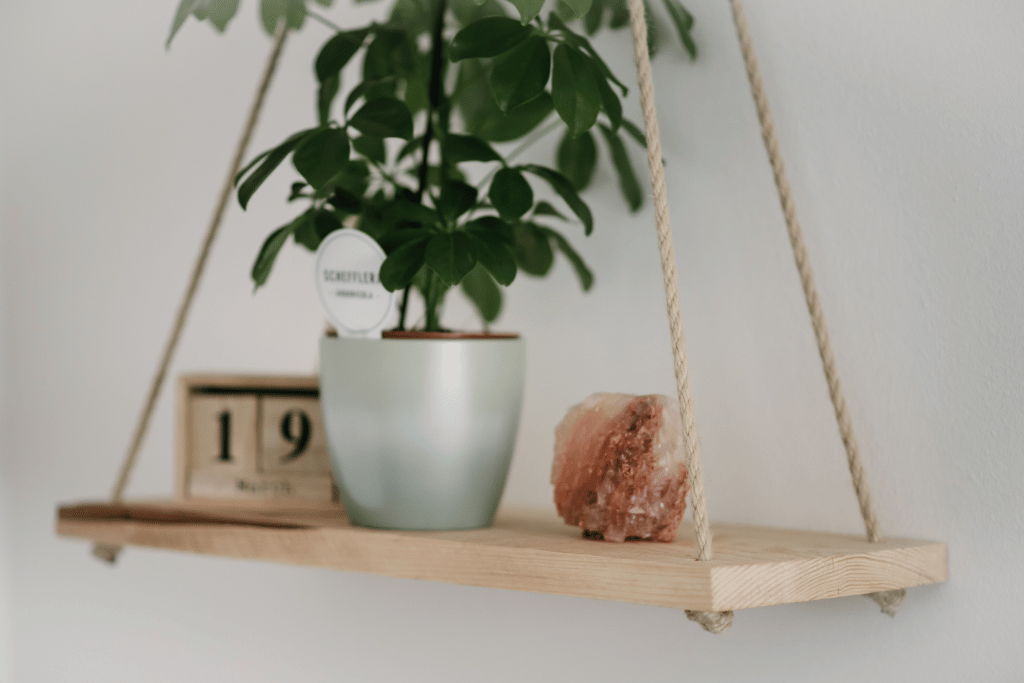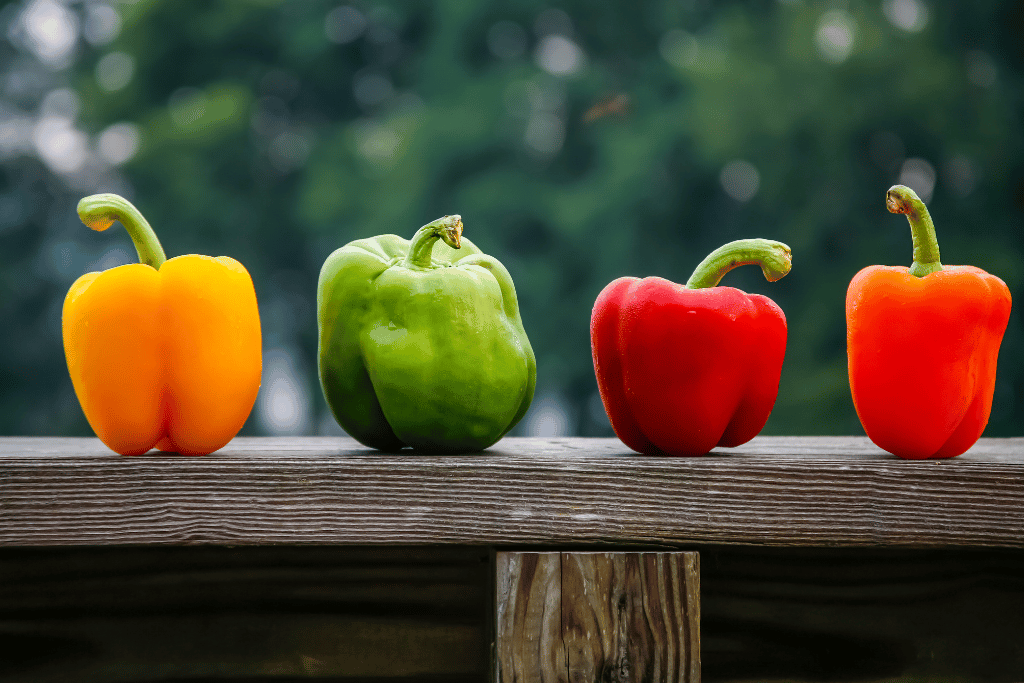
Are you tired of struggling to keep your Purple Waffle Plant healthy and vibrant? In this Purple Waffle Plant Growing and Caring Guide, we have the solution to your plant-care woes!
The problem: Many plant enthusiasts face challenges when it comes to nurturing the Purple Waffle Plant, also known as Hemigraphis alternata. It can be frustrating to see your plant wilt or lose its vibrant purple hue.
The solution: Our comprehensive guide will provide you with the knowledge and practical tips you need to overcome these challenges and ensure your Purple Waffle Plant not only survives but thrives. Say goodbye to wilted leaves and hello to a flourishing and beautiful indoor plant!
The Red Flame Ivy
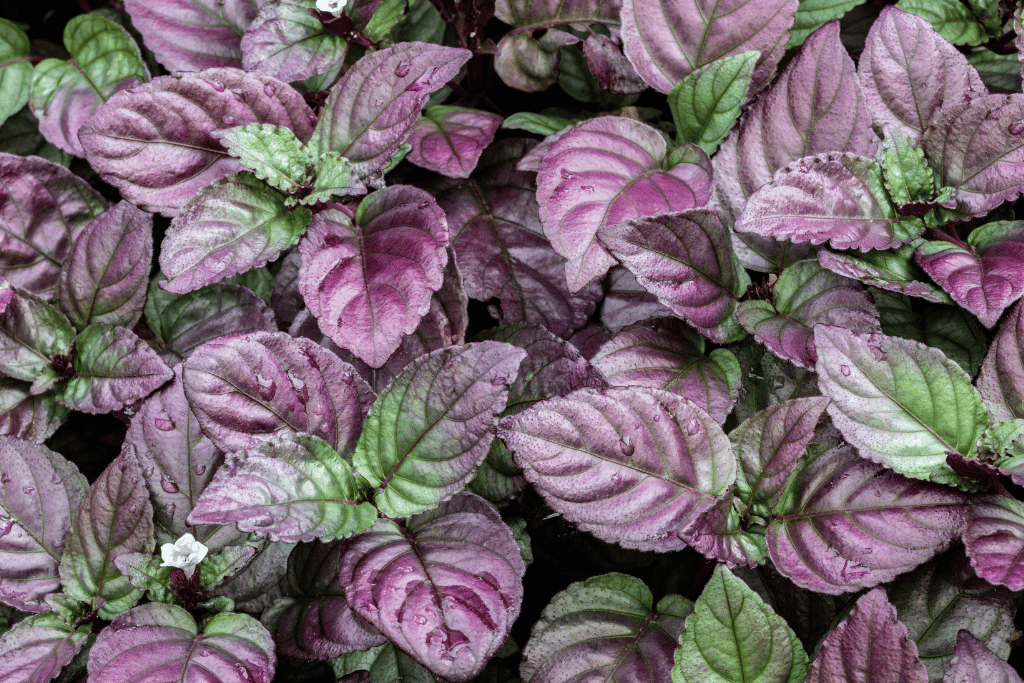
The purple waffle plant, scientifically known as Hemigraphis alternata, is a captivating and delightful addition to any indoor or outdoor garden. This charming plant also goes by the names Red Flame Ivy and Metal Leaf Plant. Originating from the lush rainforests of the Maluku Islands in Indonesia, it thrives in tropical conditions and boasts a striking aesthetic.
Interesting Facts About Purple Waffle Plant
Unique Foliage:
One of the most striking features of the purple waffle plant is its distinctive foliage. The leaves of this plant are not just green; they exhibit a remarkable combination of green and purple hues. What truly sets them apart are the deep indentations on their surface, reminiscent of waffle patterns, which is where the plant derives its common name.
Small and Versatile:
Purple waffle plants are naturally petite, reaching a maximum size of approximately eight inches in both height and width. This compact size makes them incredibly versatile, as they can be accommodated in various settings, from small apartments to spacious gardens.
Indoor or Outdoor:
One of the remarkable aspects of purple waffle plants is their adaptability to different environments. Whether you have a sunny indoor spot yearning for some greenery or a shady garden corner, these plants can thrive both indoors and outdoors.
Air Purifiers:
Beyond their aesthetic appeal, purple waffle plants serve a dual purpose as natural air purifiers. They possess the ability to filter out harmful chemicals from the air, making them not only visually appealing but also beneficial for your indoor air quality.
Now, let’s get our Purple Waffle Plant growing and caring guide forward!
How to Grow Purple Waffle Plant Indoors and Outdoors
These unique plants, with their distinctive foliage and versatility, can be grown successfully both indoors and outdoors. Here’s what you need to know:
Indoors:
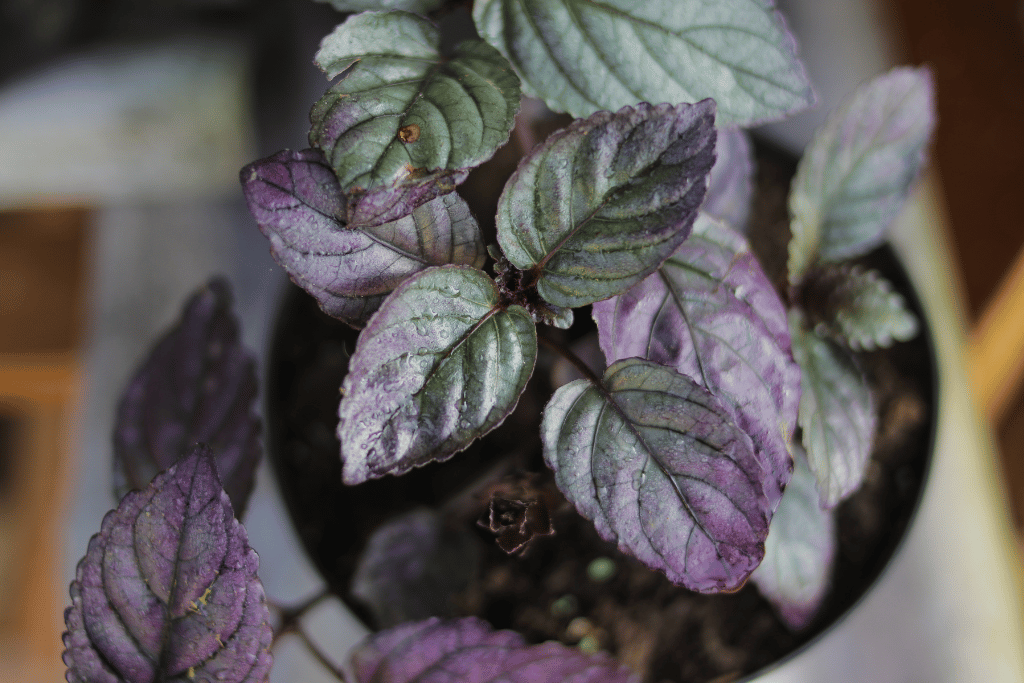
Choose a Suitable Pot: Select a pot with drainage holes at the bottom. This helps prevent overwatering, which can harm your plant.
Potting Mix: Use a well-draining potting mix that is airy and rich in organic matter. You can find this at a garden store.
Plant Placement: Place your purple waffle plant in a bright spot with indirect sunlight. Avoid direct sunlight, as it can scorch the leaves.
Watering: Water your plant when the top inch of soil feels dry to the touch. Water it gently and let any excess water drain away.
Humidity: Purple waffle plants love humidity. You can increase humidity by misting the leaves or placing a tray of water near the plant.
Temperature: Keep the temperature between 65-75°F (18-24°C). Avoid extreme cold or hot drafts.
Fertilize: Feed your plant with a balanced liquid fertilizer every 4-6 weeks during the growing season (spring and summer).
Pruning: Trim the plant to encourage bushy growth and remove any leggy or dead branches.
Outdoors:
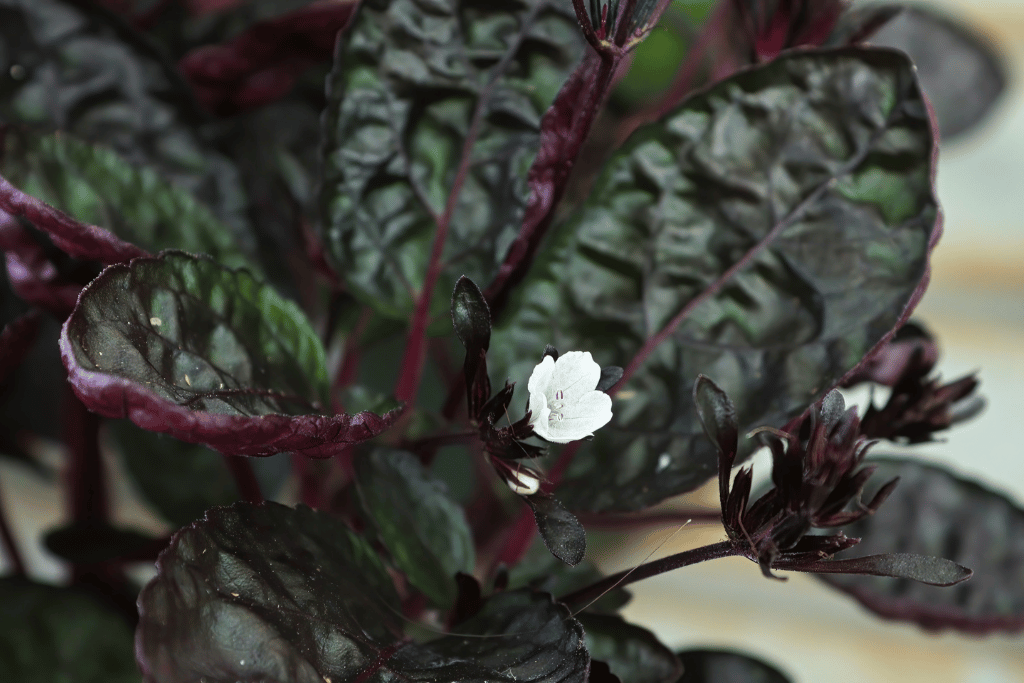
Climate Consideration: Purple waffle plants thrive in a mild climate with temperatures above 50°F (10°C). They prefer partial shade outdoors.
Soil Preparation: Choose a well-draining soil with good organic matter. You may need to amend the soil with compost to improve drainage.
Planting: Dig a hole that is slightly larger than the root ball of your plant. Place the plant in the hole and backfill with soil.
Spacing: If planting multiple purple waffle plants, space them about 1-2 feet apart to allow for growth.
Mulching: Apply a layer of mulch around the plant to retain moisture and keep the soil cool.
Watering: Water your outdoor purple waffle plant regularly, keeping the soil consistently moist but not soggy.
Pruning: Prune your plant as needed to maintain its shape and remove dead or diseased branches.
Protection: During extreme weather conditions like frost or heavy rain, provide some protection to your outdoor plants, such as covering them or moving them indoors temporarily.
Everything You Need to Know About Purple Waffle Plant Care
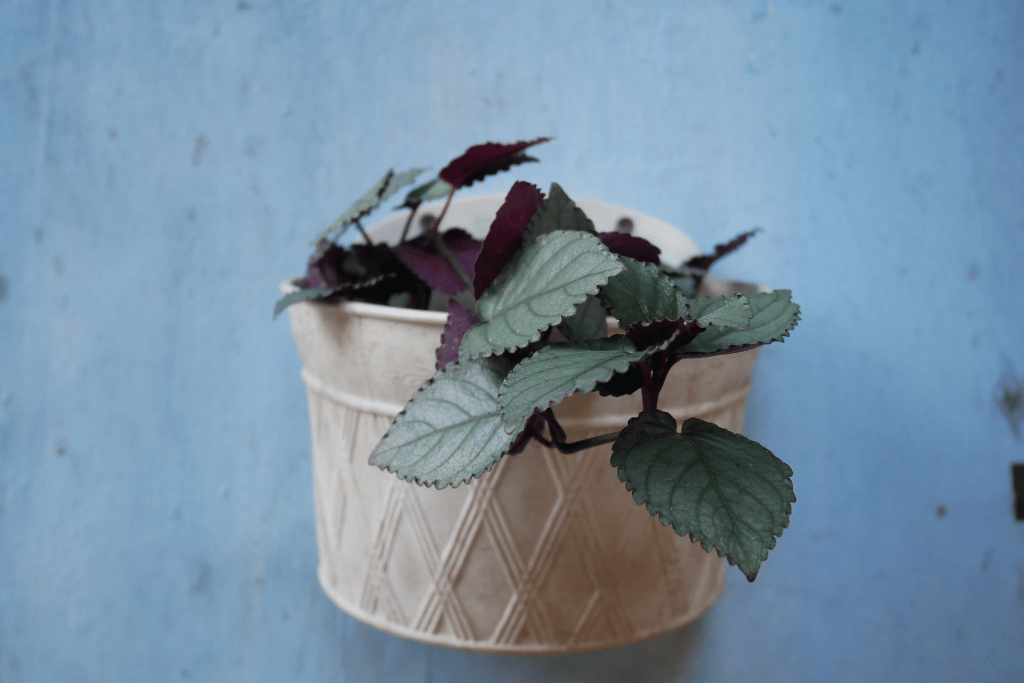
Growth Expectations:
Purple waffle plants are naturally petite, with a maximum size of approximately eight inches in both height and width. This compact growth pattern makes them ideal for smaller living spaces, such as apartments and cozy homes. Their manageable size also means they can thrive in various containers, making them an excellent choice for indoor gardening.
Choosing the Right Pot:
Selecting an appropriate pot is a critical step in caring for purple waffle plants indoors. Opt for a container that falls within the range of four to six inches in diameter, ensuring it has adequate drainage holes at the bottom. Proper drainage is essential to prevent waterlogged soil, which can harm the plant’s delicate root system.
Optimal Soil Mix:
The type of soil mix you use plays a significant role in maintaining a healthy purple waffle plant indoors. An ideal potting mix should strike a balance between aeration and drainage while retaining enough moisture to keep the soil consistently damp but not waterlogged. Consider using a potting mix that includes peat moss or coco coir as base materials, as these retain moisture while also providing aeration. To further enhance drainage and aeration, incorporate materials like perlite and pine bark fines.
Additionally, aim for a mildly acidic to neutral pH level, typically ranging from 6.0 to 7.0. This pH range aligns with the plant’s preferences, ensuring optimal nutrient absorption and overall well-being. If you prefer a ready-made soil mix, options like Espoma Organic Potting Mix and Fox Farm Happy Frog Potting Soil are excellent choices for your purple waffle plant.
Planting:
Planting your purple waffle plant indoors is a straightforward process that requires attention to detail. Follow these steps to ensure a successful transplant:
Prepare the Pot: Begin by filling the chosen pot with approximately an inch of potting soil. This initial layer creates a suitable foundation for the plant’s root system.
Position the Plant: Gently remove the purple waffle plant from its existing container, being cautious not to damage the roots. Place the plant’s root ball into the new pot, ensuring it rests comfortably within the container.
Fill with Soil: Carefully add more potting soil to the pot, surrounding the plant’s root ball. Ensure the plant is securely anchored in its new home, and the soil reaches the appropriate level.
Water Thoroughly: After planting, water the plant thoroughly to settle the soil and provide essential hydration to the plant. This initial watering helps the purple waffle plant adapt to its new environment.
Purple Waffle Plant Light Requirements:
Understanding the light requirements of purple waffle plants is vital for their well-being. In their natural habitat, these plants thrive in the understory of tropical forests, where they receive dappled light. To replicate these conditions indoors, aim to provide your plant with bright yet indirect sunlight.
Bright, indirect sunlight entails placing your purple waffle plant in a well-lit area while protecting it from direct sun exposure. Placing it on a windowsill of a south-facing window may result in excessive light, potentially damaging the plant’s leaves. Conversely, positioning it in a dark corner may deprive it of the necessary light for healthy growth.
Ideal locations for these plants indoors include well-lit rooms, spots a few feet away from east-facing or north-facing windows, or near a south-facing window that is adorned with a sheer curtain. This combination of bright but diffused light ensures that your purple waffle plant receives the optimal amount of illumination for vigorous growth.
Temperature & Humidity Preferences:
Given their native origins in Indonesia, purple waffle plants have specific temperature and humidity preferences that contribute to their well-being.
Temperature: Maintaining an appropriate temperature range is crucial for the health of your purple waffle plant. Aim to keep the air temperature within the range of 60-80°F (13 to 24°C). Avoid exposing the plant to extreme temperature fluctuations, such as drafts from exterior doors or proximity to heating or cooling vents.
These plants are sensitive to cold temperatures and can be damaged by frost. Therefore, it’s essential to bring them indoors before the temperature drops below 50 degrees Fahrenheit to prevent any cold-related stress or damage.
Humidity: Purple waffle plants thrive in moderately high humidity levels, mirroring the moist air of their tropical habitat. While they can survive in lower humidity conditions, they truly flourish when the air around them is adequately moist.
If your indoor environment tends to be dry, especially during the winter months when heating systems are in use, consider providing a boost of humidity to benefit your purple waffle plant. A humidifier is the most effective way to achieve this, as it can maintain consistent humidity levels in the room where your plant resides. Alternatively, you can create a makeshift humidity tray by placing a tray filled with water and pebbles near the plant. As the water evaporates, it will increase the moisture level in the immediate vicinity of the plant.
By carefully regulating temperature and humidity, you can create an environment that closely mimics the tropical conditions that purple waffle plants thrive in, promoting their overall health and vitality.
Purple Waffle Plant Watering:
Proper watering practices are a cornerstone of purple waffle plant care indoors. These plants have a preference for consistently moist soil, but it’s essential to strike a balance to avoid overwatering, which can lead to root rot. Follow these guidelines to ensure your purple waffle plant receives the right amount of moisture:
Soil Moisture Check: Before watering, assess the moisture level of the soil. Insert your finger into the soil up to the first knuckle. If the top ¼ inch of soil feels dry to the touch, it’s an indication that your plant is ready for watering.
Deep Watering: When it’s time to water, do so thoroughly. Water the plant until you observe water draining from the pot’s drainage holes. This ensures that moisture penetrates the root zone adequately.
Drainage is Key: Ensure that the pot you choose for your purple waffle plant has drainage holes at the bottom. This allows excess water to escape, preventing the roots from sitting in waterlogged soil, which can lead to root rot.
Avoid Standing Water: After watering, discard any excess water that accumulates in the saucer beneath the pot. Standing water in the saucer can be absorbed back into the pot, increasing the risk of overwatering.
Consistency is Key: Establish a consistent watering routine to help your purple waffle plant thrive. It’s generally recommended to water your plant when the top layer of soil feels dry, which may translate to watering approximately once a week. However, the frequency may vary depending on factors like humidity and ambient temperature. Always rely on soil moisture as your primary indicator for when to water.
Water Quality: Ensure that the water you use is of good quality, free from harsh chemicals or excessive minerals. If your tap water contains chlorine or fluoride, consider using filtered or distilled water, as these chemicals can be detrimental to the plant over time.
Fertilizing:
To support healthy growth and vibrant foliage, purple waffle plants benefit from regular fertilization. These plants are native to the nutrient-rich soils of tropical rainforests, making it essential to provide them with a continuous supply of essential nutrients.
When selecting a fertilizer for your purple waffle plant, opt for a slow-release houseplant fertilizer with balanced NPK (nitrogen, phosphorus, and potash) ratios. A 6-12-6 or similar formulation is suitable for promoting robust growth and foliage development.
Here’s a simple fertilization routine to follow:
Frequency: Fertilize your purple waffle plant approximately once a month during the active growing season, which typically spans spring and summer. Reducing the frequency during the dormant winter months is advisable.
Dilution: Dilute the chosen fertilizer to half the recommended strength to avoid overfeeding, which can lead to spindly growth.
Application: Apply the diluted fertilizer directly to the soil, ensuring even distribution. Avoid direct contact with the plant’s foliage, as this can potentially lead to burning.
Watering After Fertilization: After fertilizing, water the plant to allow the nutrients to reach the root zone effectively.
Pruning the Purple Waffle Plant: Tips for Shaping and Maintenance

Pruning is an essential aspect of caring for your purple waffle plant (Hemigraphis alternata) to maintain its shape, encourage healthy growth, and rejuvenate the plant when needed. While purple waffle plants are relatively compact and slow-growing, occasional pruning can help you achieve the desired appearance and promote a fuller, more vibrant plant. In this section, we’ll explore when and how to prune your purple waffle plant effectively.
Why Prune Your Purple Waffle Plant?
Pruning serves several purposes when it comes to caring for your purple waffle plant:
Maintaining Shape: Over time, your plant may develop straggly stems or uneven growth. Pruning allows you to shape the plant, giving it a more compact and aesthetically pleasing appearance.
Encouraging Bushier Growth: Purple waffle plants tend to produce new growth at the tips of their stems. By pruning the tips, you can encourage branching and bushier growth, resulting in a fuller plant.
Removing Diseased or Damaged Growth: Pruning is an effective way to remove any diseased, yellowing, or damaged foliage or stems, preventing the spread of issues and maintaining the overall health of the plant.
Rejuvenation: If your purple waffle plant has become leggy or has lost its vitality, pruning can help rejuvenate it by stimulating new growth and refreshing its appearance.
When to Prune Your Purple Waffle Plant?
Pruning can be performed throughout the year, but it’s most effective during the active growing season, which typically occurs in spring and summer. During this period, the plant is more responsive to pruning, and new growth emerges more readily. However, light pruning can be done as needed throughout the year to address specific issues or maintain the plant’s shape.
How to Prune Your Purple Waffle Plant:
Follow these steps to prune your purple waffle plant effectively:
Prepare Your Tools: Ensure you have clean and sharp pruning shears or scissors. Clean tools help prevent the introduction of diseases to your plant.
Identify What Needs Pruning: Examine your plant carefully to identify the areas that require pruning. Look for stems with excessive length, damaged or yellowing leaves, or areas where you’d like to encourage branching.
Make Your Cuts: To prune a stem, identify a node (the small bump or nub where leaves, stems, or roots emerge) and make a clean cut just above it. This node is where new growth will emerge. For aesthetic pruning, trim the stem to your desired length, keeping in mind the overall shape you want to achieve.
Remove Diseased or Damaged Growth: If you notice any stems or leaves that appear diseased or damaged, remove them entirely. Make the cuts just above a healthy leaf or node to encourage new growth.
Encourage Branching: If you wish to promote branching and a bushier appearance, prune the tips of the stems. This encourages the plant to produce new growth from the nodes below the cut.
Dispose of Pruned Material: After pruning, collect and dispose of the pruned material. Do not leave it in the pot, as it can create a breeding ground for pests and diseases.
Maintenance Pruning: Throughout the growing season, inspect your plant regularly for any new growth that requires pruning. Consistent maintenance pruning will help you keep the plant looking its best.
Observe Plant Response: After pruning, keep a close eye on your purple waffle plant to observe how it responds. You should start to see new growth emerging from the nodes where you made your cuts within a few weeks.
Rejuvenation Pruning:
If your purple waffle plant has become leggy, sparse, or lacks vitality, you can perform a more extensive rejuvenation pruning. This involves cutting the entire plant back to a few inches from the soil level. This drastic pruning should be done in the early spring, just as the plant enters its active growth phase. While it may initially seem severe, this rejuvenation pruning stimulates new growth from the base, resulting in a healthier and more vigorous plant.
Purple Waffle Plant Propagation
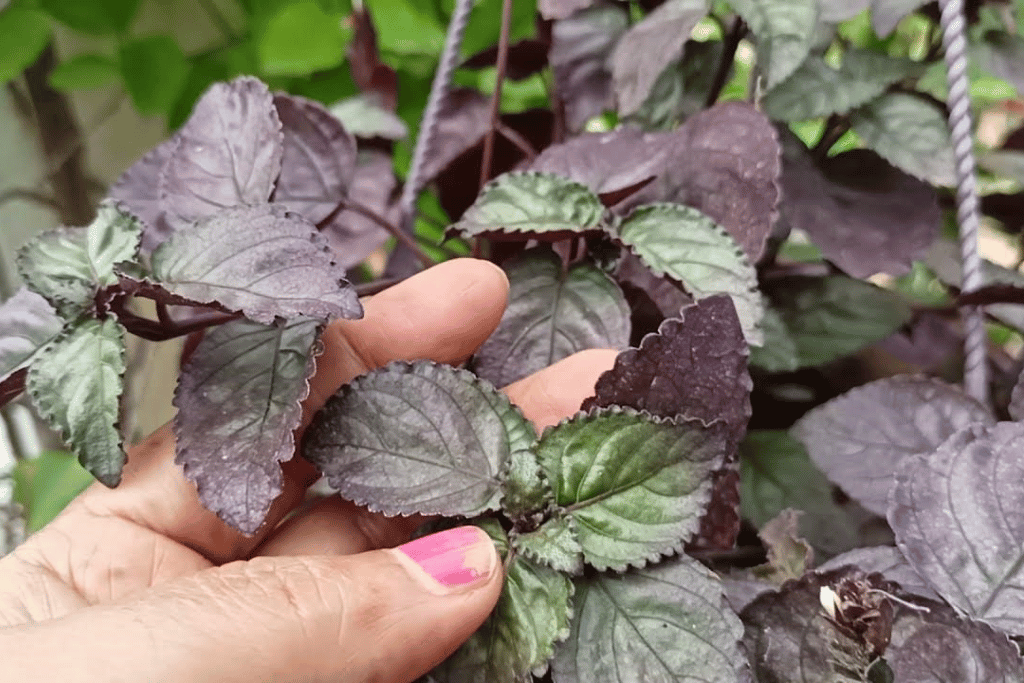
Propagation is a fascinating aspect of purple waffle plant care, allowing you to create new plants from your existing ones. These plants are known for their ease of propagation, primarily through stem cuttings. Here’s a step-by-step guide to successfully propagate your purple waffle plant:
Materials Needed:
- Healthy purple waffle plant (the parent plant)
- Clean, sharp shears or scissors
- Small pots with drainage holes
- Moist potting mix
- Transparent plastic bags or plastic wrap
Propagation Steps:
Select a Healthy Stem: Begin by identifying a healthy and actively growing stem on the parent plant. Look for a stem that includes at least one node, which is a small bump or nub where leaves, roots, or stems can grow.
Prepare the Cutting: Using clean and sharp shears or scissors, make a clean cut just below a node on the selected stem. Ensure that the cutting is at least a few inches in length.
Remove Lower Leaves: Trim away any leaves or foliage from the lower part of the cutting, leaving a bare stem with a node at the base.
Rooting Medium: Fill small pots with a well-moistened potting mix. Make a small hole in the center of the soil to accommodate the cutting.
Plant the Cutting: Insert the prepared cutting into the hole in the potting mix, ensuring that the node is buried in the soil while the upper portion with leaves remains above the surface.
Watering: Water the cutting lightly to settle the soil around it.
Create a Mini Greenhouse: To create a conducive environment for root development, cover the potted cutting with a transparent plastic bag or plastic wrap. This makeshift greenhouse helps maintain high humidity around the cutting.
Place in Indirect Light: Position the potted cutting in a location with bright, indirect light. Avoid exposing it to direct sunlight, as this can be too harsh for the developing plant.
Keep an eye: Keep a close eye on the cutting’s progress. Ensure that the potting mix remains consistently moist but not waterlogged. The plastic covering should help retain humidity, but you can mist the cutting occasionally if needed.
Root Development: Over time, the cutting will develop roots. You can check for root growth by gently tugging on the cutting; resistance indicates the presence of roots.
Transplanting: Once the cutting has established a robust root system (typically after a few weeks to a couple of months), it’s ready to be transplanted into a larger pot or its permanent container.
Propagation allows you to expand your collection of purple waffle plants easily and cost-effectively. It’s a rewarding process that offers the satisfaction of nurturing new life from a parent plant.
Common Problems of Purple Waffle Plant:
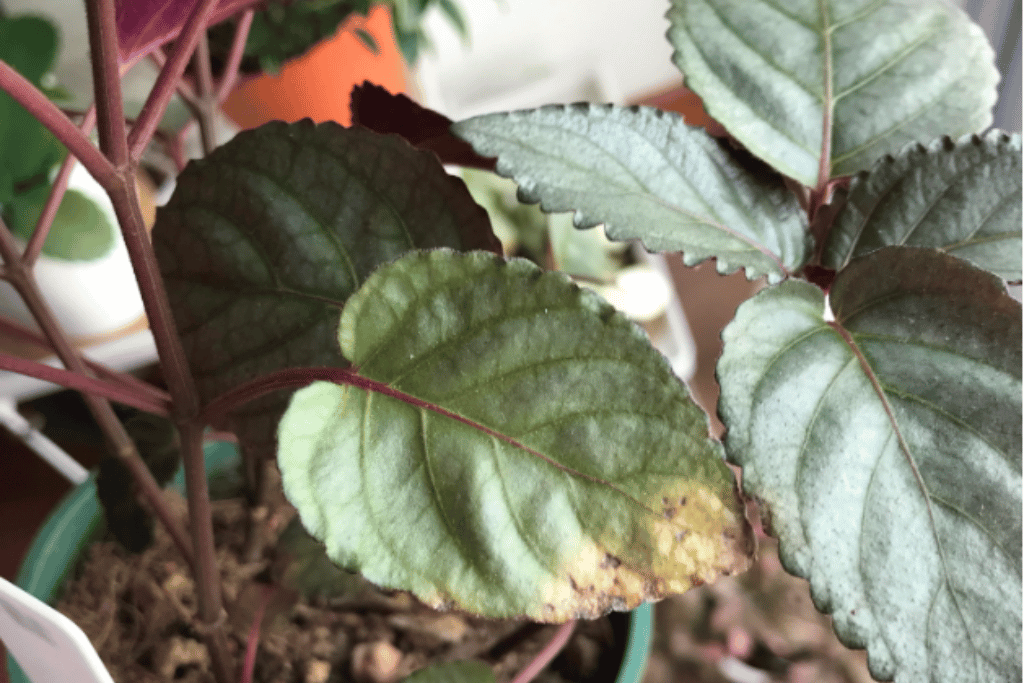
While purple waffle plants are generally low-maintenance, they may encounter a few common issues that can affect their health and appearance. Here are some common problems and how to address them:
Pests:
Preventing pest infestations is the best approach to maintaining the health of your purple waffle plant. Regularly inspect your plant for signs of pests, such as scale insects, mealybugs, and whiteflies. These insects can harm your plant by feeding on its sap.
To prevent pest infestations, periodically spray your purple waffle plant with an insecticidal soap or neem oil solution. These treatments can deter pests from settling on the plant.
If you notice scale insects on your plant, gently scrape them off using a soft cloth or sponge. Avoid using excessive force, as this can damage the plant’s leaves.
For mealybug infestations, use a cotton ball soaked in rubbing alcohol to wipe them off from the underside of the leaves.
Whiteflies can be challenging to eliminate. You can try vacuuming them up or rinsing the entire plant in the sink to remove them.
Diseases:
Most diseases that affect purple waffle plants can be prevented by maintaining proper growing conditions and avoiding overwatering. One common issue to watch for is root rot, which is caused by overly saturated soil.
Ensure that your plant’s pot has adequate drainage to prevent water from accumulating in the soil. If you suspect root rot, carefully remove the plant from its pot, trim off any affected roots, and replant it in fresh, well-draining soil.
Growing Problems:
Sometimes, growth issues may arise due to factors such as inadequate light or over-fertilization.
Leggy Growth: If your plant exhibits leggy growth (long, weak stems), it may be a sign of over-fertilization. To address this, flush the soil by running water through the pot for about 10 minutes to remove excess nutrients. Adjust your future fertilization regimen to avoid overfeeding.
White Spots on Leaves: White spots on the leaves could indicate excessive sunlight or insufficient humidity. If your purple waffle plant receives too much direct sunlight, consider placing a curtain to provide shade. Additionally, invest in a small humidifier to enhance the indoor humidity levels, which can benefit the plant.
Purple Waffle Plant Benefits

Beyond their striking appearance and ease of care, purple waffle plants offer several noteworthy benefits for both your home environment and overall well-being. Here are some of the advantages of having purple waffle plants in your living space:
Air Purification:
Purple waffle plants are effective air purifiers. They have been recognized by NASA as one of the top five plants for filtering out harmful chemicals from indoor air, including benzene, toluene, octane, alpha-pinene, and trichloroethylene. The unique waffled surface of their leaves provides an abundance of surface area for air purification, helping to create a healthier indoor environment.
Non-Toxic:
Purple waffle plants are safe for both humans and pets. They are non-toxic and do not pose a threat if accidentally ingested. However, it’s still advisable to keep them out of reach of children and pets to prevent any damage to the plants or potential ingestion of soil.
Versatile Decor:
Due to their compact size and attractive foliage, purple waffle plants make versatile and aesthetically pleasing additions to your indoor decor. They can be placed on shelves, windowsills, or small plant stands to add a touch of natural beauty to any room.
Natural Humidifiers:
By releasing moisture through transpiration, purple waffle plants can contribute to a slightly more humid indoor environment. This can be particularly beneficial during the dry winter months when indoor humidity tends to drop.
Low Maintenance:
These plants are known for their low maintenance requirements, making them an excellent choice for busy individuals or those new to gardening. With the right care, they can thrive and continue to enhance your living space.
Final Words
And that’s all folks! We hope that this Purple Waffle Plant growing and caring guide offers a complete resource for anyone interested in growing and tending to these unique houseplants. We covered essential care tips, from selecting the right location and light to maintaining the right soil and moisture levels. By following the information above, you can ensure your Purple Waffle Plant thrives and adds beauty to your indoor space.
FAQs About Purple Waffle Plants
Is a purple waffle plant toxic to cats or other animals?
No, purple waffle plants (Hemigraphis alternata) are not considered toxic to cats or other animals. They are generally safe to have around pets. However, it’s still essential to monitor your pets around the plant to prevent any accidental damage or ingestion.
What do purple waffle plant crispy leaves indicate?
Crispy leaves on a purple waffle plant can indicate various issues, including underwatering, overexposure to sunlight, low humidity, or the presence of pests. To address this problem, ensure you are maintaining the correct watering schedule, provide appropriate lighting, and inspect the plant for signs of pests.
Why are my purple waffle plant leaves curling
Curling leaves on a purple waffle plant can be a sign of insufficient moisture in the air or soil. These plants prefer high humidity levels. Ensure you maintain a humid environment and water the plant adequately to prevent leaf curling. Also, check for pests or disease as they can cause curling as well.
Why is my purple waffle plant drooping?
Drooping purple waffle plant leaves can result from underwatering, overwatering, or exposure to extreme temperatures. To address this issue, check the moisture level in the soil, ensure proper drainage, and provide the plant with appropriate temperature and light conditions.
How tall does a purple waffle plant grow?
Purple waffle plants are typically small to medium-sized houseplants and can reach a height of around 6 to 12 inches (15 to 30 cm) under ideal conditions. However, the growth height can vary depending on factors such as the size of the pot, care provided, and environmental conditions. Pruning can also affect the plant’s height and overall shape.


